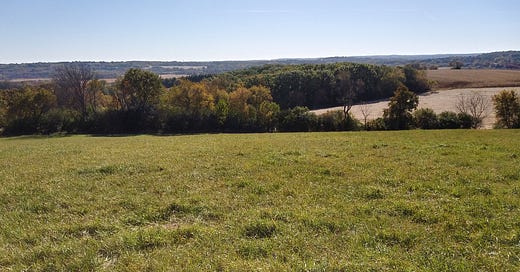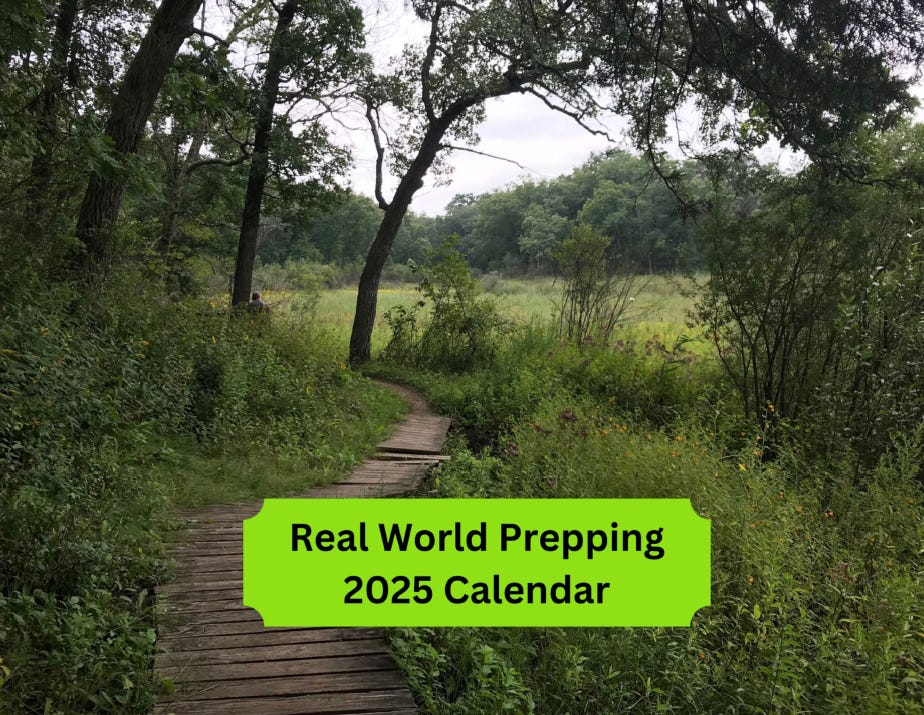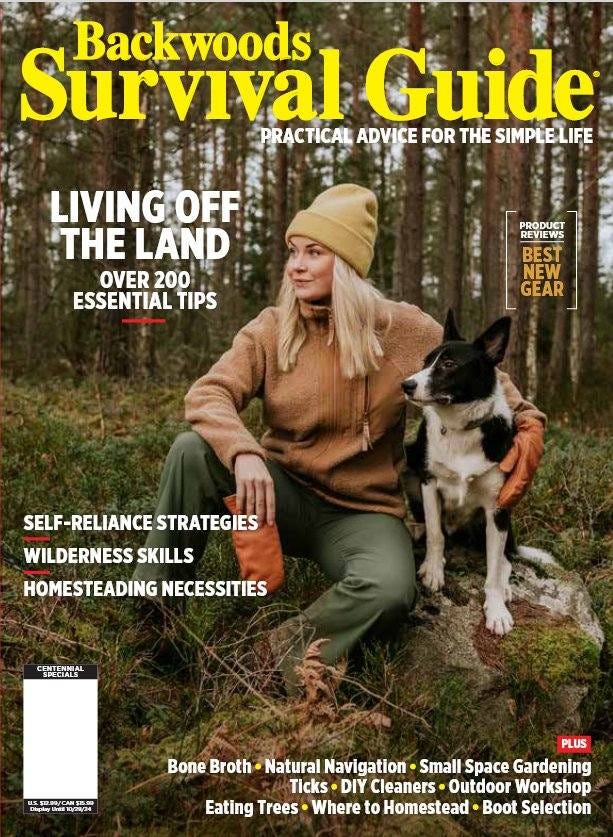The Survival Weekly Dispatch - Volume 11, Issue 40
Hey folks, thanks for checking out the newsletter this week. I feel like I’m going in a million different directions lately. Part of that is due to it being true, at least to a degree. When my publisher canceled Prepper Survival Guide magazine, it was a pretty big hit to my bottom line. I’ve been scrambling to line up other work to make up for it. The end result of that is, well, me going in a million different directions.
Still beats punching a clock, though.
* * *
Prepper Tip -- The easiest fight to win is the one that doesn’t happen. In the world of self-defense, de-escalation techniques are sometimes given far too little attention. Sure, there can be situations where violence is going to happen no matter what, but those are far outnumbered by situations where it could be avoided through the application of some de-escalation strategies.
This time around, let’s focus on communication.
There are two parts to communication—verbal and non-verbal. Verbal is what is heard, non-verbal is everything else.
Verbal starts with volume and tone. Speak calmly and avoid raising your voice as best you can. Depending on the environment, that might be a problem. For example, you’re in a nightclub or tavern. In a situation like that, what you want to avoid is sounding like you’re shouting AT the person, rather than TO them, if that makes sense. I also tend to slow my speech down a touch, as it can come across as more soothing.
What you say matters as much as how you say it. Avoid making demands. Think about it like this. If you and your significant other are having a spat and one of you says, “Calm down,” that’s just going to escalate things, right? Same thing applies outside the home. Use I statements instead, such as, “I can see that you’re angry. What can I do to help you?”
Don’t dismiss their feelings or judge them in any way. No matter if you feel they’re out of line, overreacting, or just being goofy, those feelings are all too real for them. Treat them with respect.
As for the non-verbal side of things, start by keeping a safe distance from them. This does multiple things. It keeps you out of reach, so they can’t swing and connect without at least moving toward you. Plus, keeping that space between you and them helps to keep you from looking threatening to them. If you can stand a little off to their side, rather than straight on face-to-face, all the better.
If you’re a hand talker, cool it as much as possible. Avoid sudden gestures, especially big ones where you’re swinging your arms and hands around. Just like with your voice, keep your movements slow and easy.
Most of us are pretty good at spotting fake smiles, so don’t bother with that. Instead, keep your expression neutral. Maintain some degree of eye contact, but don’t stare them down.
Strategies like these aren’t foolproof, but they’ll work more often than not. The goal is simply to talk the person down off the ledge, so to speak. You don’t need to be their new best friend, but if you can sidestep the fisticuffs, everyone wins.
* * *
A couple of days ago, there was a pretty gnarly fire just outside of town. I’ve not heard any details yet as to the cause, number of injuries (if any), and such. But numerous fire departments were involved in knocking this one down.
When was the last time you did a fire drill at home?
How about at work?
When was the last time you inspected your fire extinguishers?
When was the last time you tested your alarms?
There’s no need to send in answers to those questions. Just think about them and then take whatever action you feel is appropriate based on those answers.
* * *
“Buy one item a week for six months and you’ll be far better prepared than your neighbors.”
I see this sort of sentiment posted online a fair bit. It’s not incorrect, but it’s also sort of just feel-good nonsense. Don’t compare levels of preps as though this is a competition to see which family can amass the most stuff. Decide on a level of preparedness that makes sense for you and your family, outline a plan on how to get there, then get to work.
* * *
The 2024 Gear Guide special for Backwoods Survival Guide magazine should be appearing in stores. Look for it anywhere magazines are sold. You can also order it online here.
There are well over 100 individual products in this issue. Several have detailed reviews. Some of the companies represented include:
Bark River Knives
Wazoo Survival Gear
5.11 Tactical
Tuff Possum Gear
Leatherman
Victorinox
Smith & Sons Knives
We’re covering clothing, shelter, first aid, knives, multi-tools, fire making, and tons more. We’d love to make this an annual issue, as it was a lot of fun to put together. And we timed it just right for holiday shopping.
* * *
I have two 2025 calendars available for purchase.
Real World Prepping has about 130 tips, hints, and suggestions scattered throughout the year to keep you moving forward to being ready for life’s little and not so little curve balls. There’s also a ton of bonus content that can be found through the QR codes that are printed for each month.
Point to Pommel is for my fellow knife nerds. The calendar features knives from:
Bark River
LT Wright
7Forge
Spartan Blades
Buck Knives
Night Watch
White River Knives
TOPS Knives
Kopis Designs
Smith & Sons
Vehement Knives
Dan Tope
If you are interested in a bulk purchase of either calendar, drop me an email [jim@survivalweekly.com] to discuss rates.
* * *
For our hike this past weekend, we wanted to go somewhere with a view of the area, in hopes of seeing some great fall color. While the area is still only around 30% changed, we did find a great vista.
Survival Tip – Dealing with Responding Officers
If you’re present during a mass shooting or similar event, at some point law enforcement is going to arrive. It’s important to remember that while YOU know you’re not the shooter, THEY might not. Responding officers are going to be tense and have their adrenaline jacked up to 11. They haven’t seen or heard what you perhaps did and they’re coming in blind to a large degree.
Here are some tips on what to do and what to avoid doing.
If you make a call to 911, give them as much information as possible, including your location and a description of what you’re wearing. This way, officers will know where to look for you. Answer the dispatcher’s questions as best you can and stay on the line with them for as long you feel it’s safe to do so.
When you see officers on the scene, do not jump up and run at them unless you are explicitly told to do so. From the officers’ perspective, anything that looks remotely like a threat may be put down hard and fast. If you have a weapon, particularly a firearm, put it down before approach officers. Keep your hands empty and visible.
They are going to be moving quickly. Follow every instruction you are given immediately and to the best of your ability. Communicate with them clearly and share any information you have regarding the shooter and their potential location. Don’t get offended if you’re manhandled a bit throughout your extraction. They’re just wanting to get you to a safe location as quickly as possible. Little bumps and bruises, as well as your ego, will heal.
Backwoods Survival Guide Magazine
For those new to my little corner of the Internet, I am the Editor in Chief for Backwoods Survival Guide magazine. Here is the cover for the current issue available in stores right now.
You can find them just about anywhere magazines are sold, including:
Walmart
Sam's Club
Costco
Publix
Walgreens
Rite Aid
CVS
Tractor Supply
Fleet Farm
Barnes & Noble
Subscriptions are available here.
Questions, Comments, Complaints, Concerns?
I am always just an email away - jim@survivalweekly.com.







